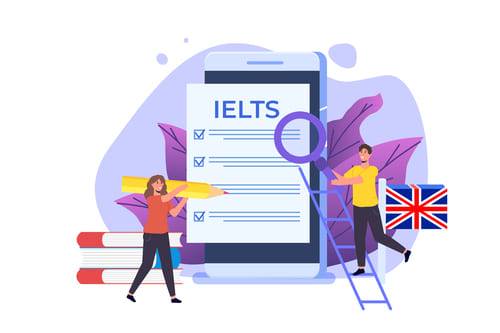Table of Contents
Storytelling in the IELTS speaking test
The IELTS speaking test is an important component of the IELTS exam, and it assesses the candidate’s ability to communicate effectively in English. To perform well on the speaking test, candidates must showcase their language skills and captivate the examiner. One effective way to achieve this is through storytelling.
Storytelling is a powerful tool that can help candidates create a connection with the examiners and leave a lasting impression. This blog will discuss how to use storytelling effectively in the IELTS speaking test.
Choose a relevant and interesting topic
The first step to incorporating storytelling into the IELTS speaking test is by choosing a relevant and interesting topic. Candidates should choose a topic they are passionate about or have personal experience with, as this will help them speak confidently and engage the audience. For example, if the topic is “Describe a memorable holiday,” the candidate could choose to tell a story about a particularly exciting or meaningful vacation they had.
Structure the story
Once the candidate has chosen a topic, they should structure their story. A good story should have a clear beginning, middle, and end and a plot or narrative arc that intrigues the audience. The candidate should start by introducing the setting, characters, and background information, then move on to the story’s main events and conclude with a resolution or reflection. By structuring the story effectively, the candidate can ensure that it flows smoothly and is easy to follow.

Use vivid language and descriptive details
Candidates should use vivid language and descriptive details to make the story more appealing and memorable. This can help the audience to visualize the story and connect with the characters and setting. For example, instead of saying, “I went to the beach,” the candidate could say, “I walked along the white sandy shore, feeling the cool breeze on my face and the warm sun on my skin.” By using descriptive language, the candidate can paint a vivid picture of the scene and immerse the audience in the story.
Use appropriate grammar and vocabulary
Using correct grammar and vocabulary is crucial when it comes to effectively captivating the audience through storytelling. Candidates should avoid using overly complex language or slang, as this can make the story difficult to follow or inappropriate for a formal setting. Instead, they should use a range of grammatical structures and appropriate vocabulary to demonstrate their proficiency in the English language.
Practice and seek feedback.

Finally, candidates should practice their storytelling skills and seek feedback to improve. They can do so by telling their stories to friends or family members, recording themselves, or practicing with a teacher or tutor. By practicing, candidates can identify areas for improvement and refine their storytelling skills. They can also seek feedback from others, who can provide constructive criticism and help them to improve their performance.
In conclusion, storytelling is a powerful tool that can help candidates to involve the audience and leave a lasting impression on the IELTS examiners. To use storytelling effectively in the IELTS speaking test, candidates should choose a relevant and interesting topic, structure the story, use vivid language and descriptive details, use appropriate grammar and vocabulary, and practice and seek feedback. With these tips, candidates can incorporate storytelling into their speaking tests and showcase their language skills and creativity.
Key takeaways
- Students can ace the speaking section of the IELTS exam by communicating effectively with the help of storytelling.
- Begin with a captivating opening to grab the examiner’s attention and make them interested in your story.
- Use descriptive language and sensory details to paint a clear picture in the examiner’s mind and make your story more engaging.
- Organize your story with a clear introduction, a well-developed body, and a satisfying conclusion. Maintain coherence and ensure a logical flow of events.
- Infuse your storytelling with genuine emotions and personal reflections to add depth and authenticity to your narrative.
While storytelling is a great way to score well in IELTS speaking, ensure you follow the above tips to get better and be ready for D-day. If you have any doubts or questions regarding IELTS preparation, feel free to reach out to us or use the comments section below. We would be happy to help you!
Like this blog? Read Next: How to Prepare for IELTS Exam | 5 expert tips
FAQS
Q1. What is storytelling, and why is it important in the IELTS speaking test?
Ans- Storytelling is the art of communicating a message or idea through a narrative or story. It is an effective way to engage the audience and create a connection with the listener. In the IELTS speaking test, storytelling can help candidates showcase their language skills and creativity and make a lasting impression on the examiners.
Q2: How can I incorporate storytelling into the IELTS speaking test?
Ans- To incorporate storytelling into the IELTS speaking test, candidates should choose a relevant and interesting topic, structure the story, use vivid language and descriptive details, use appropriate grammar and vocabulary, and practice and seek feedback. By following these steps, candidates can create a compelling narrative that engages the audience and showcases their language proficiency.
Q3. What are some examples of topics that I can use for storytelling in the IELTS speaking test?
Ans- Candidates can choose any topic that they are passionate about or have personal experience with. Some examples of topics that lend themselves well to storytelling include childhood memories, travel experiences, personal achievements or challenges, culture and traditions, and interesting hobbies or interests.






